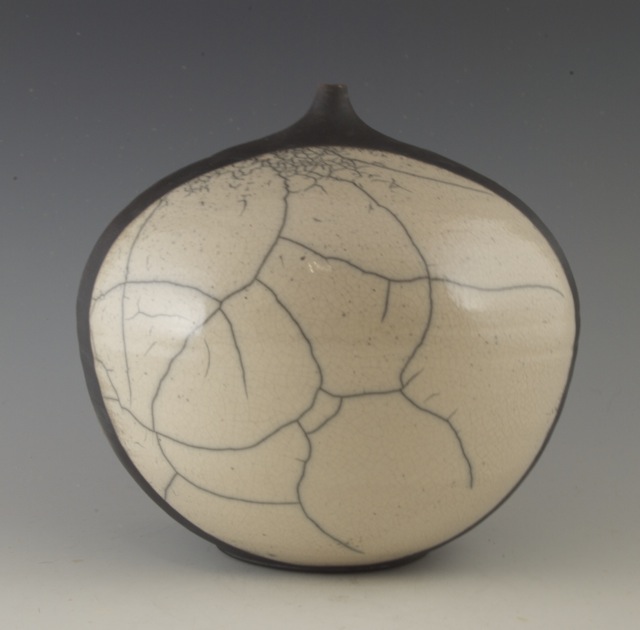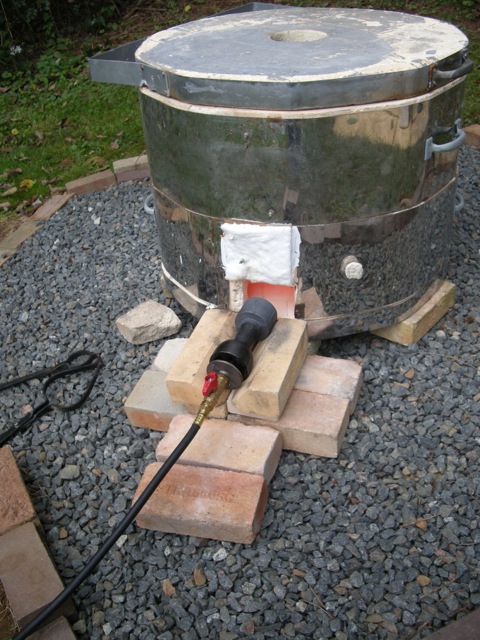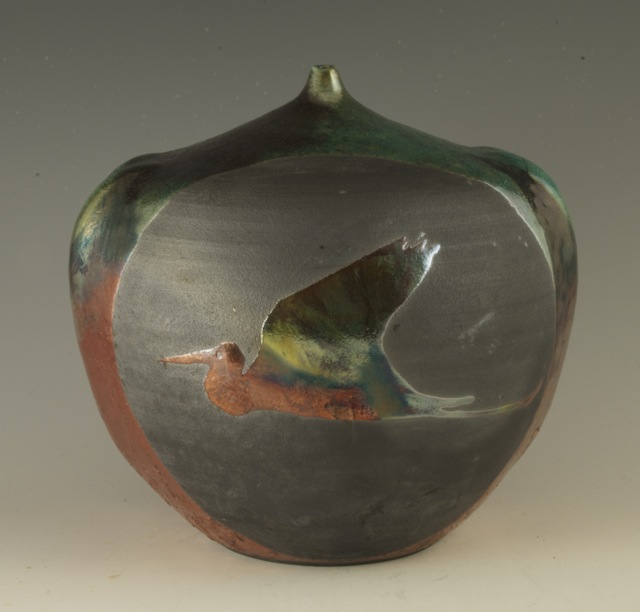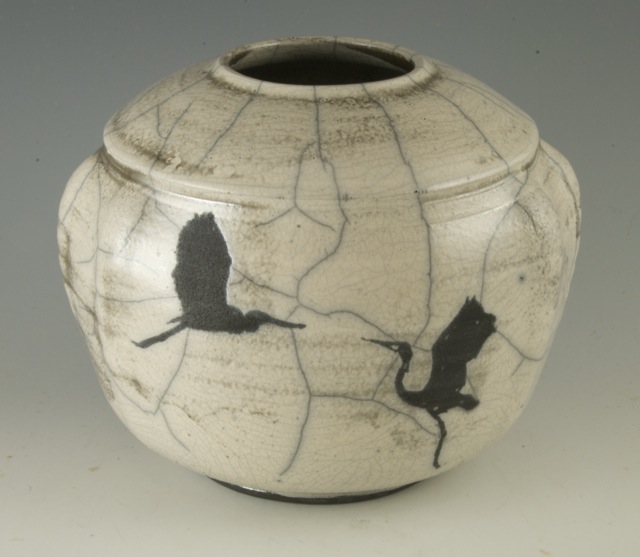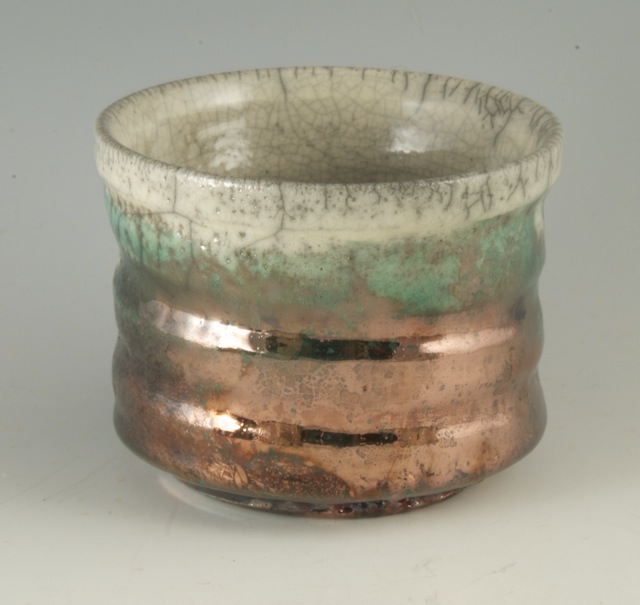2018 is my 40th anniversary of making pottery here on Cape Ann. One of the things I’ve been doing is revisiting past work, series, techniques and designs.
 (Click images to enlarge)
(Click images to enlarge)
This summer and fall I’ve been making more raku pots than my high fire pots. It has been good to have a different work cycle for awhile. Laraine Cicchetti and I built our little raku kiln 2 years ago, out of an old electric kiln.
The raku pottery firing process is quite different from high fire porcelain and stoneware. Pots are made with high fire clay, with extra grog (fired clay) for extra thermal shock resistance.
When fired, the pots always stay porous, so the vases are decorative and not for holding water, but yunomi (everyday tea cups) and chawan (tea bowls) are lovely to use for coffee and tea. The porous pot does not transmit heat like vitrified porcelain and stoneware, and feels warm and pleasant to hold in your hand.
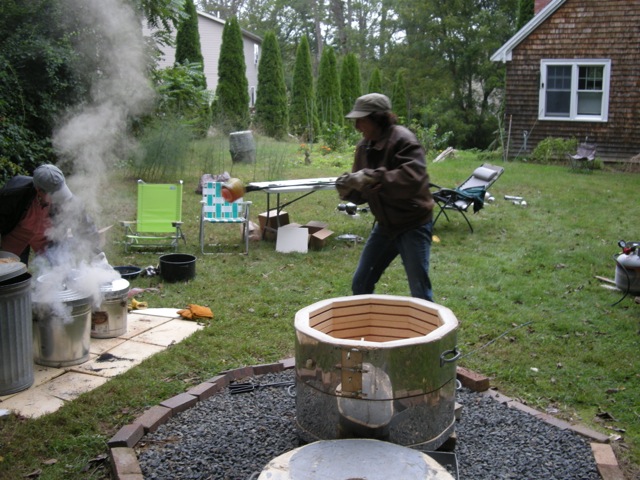 Raku pots are bisqued as normal, and then are ready to decorate and glaze. I like to use wax resist designs. When the wax is dry and hard, the pots are dipped in a low temp (1800 F) glaze and the beaded up glaze on the wax is cleaned off; I like white crackling recipes, and different copper glazes.
Raku pots are bisqued as normal, and then are ready to decorate and glaze. I like to use wax resist designs. When the wax is dry and hard, the pots are dipped in a low temp (1800 F) glaze and the beaded up glaze on the wax is cleaned off; I like white crackling recipes, and different copper glazes.
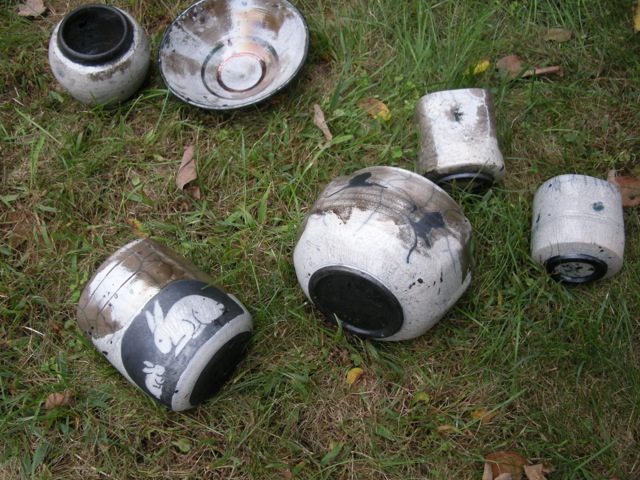 We set up the kiln each day we fire and load it up with the first batch of pots. We use little barbeque propane tanks and a small special raku sized ransom burner. In about an hour, when we see the glazes are molten, the pots are taken out with steel tongs and immediately put into barrels with combustible materials, which burst into flames, and covered quickly and tightly. While they are burning in the barrels, we reload the kiln with more pots to fire again! Subsequent loads take about 20 minutes to reach 1800 F. After about 10 minutes, we pluck the pots out of the sawdust and cool them in buckets of water. They are cool to touch and clean in about 15 minutes. The beauty is revealed! Disasters are revealed! We are happy!
We set up the kiln each day we fire and load it up with the first batch of pots. We use little barbeque propane tanks and a small special raku sized ransom burner. In about an hour, when we see the glazes are molten, the pots are taken out with steel tongs and immediately put into barrels with combustible materials, which burst into flames, and covered quickly and tightly. While they are burning in the barrels, we reload the kiln with more pots to fire again! Subsequent loads take about 20 minutes to reach 1800 F. After about 10 minutes, we pluck the pots out of the sawdust and cool them in buckets of water. They are cool to touch and clean in about 15 minutes. The beauty is revealed! Disasters are revealed! We are happy!
